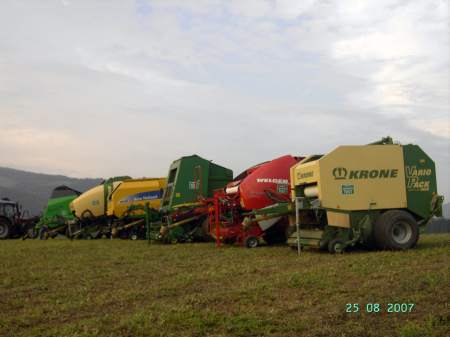In addition to the feed stock and the clean preparation for storage, the main influencing factor on the production of high-quality silage is the harvesting technology itself. In practice, the questions of the necessary baling density and knife equipment are discussed in various ways. There is no exact information about this in the literature. When harvesting dry forage, the specific advantages (transportability, tradability, manipulation, etc.) of the round bale chain have also been increasingly used for several years. However, ground hay pressed into round bales without post-drying can only be harvested in exceptional cases without major losses due to fermentation. As a rule, additional drying is required.
There are numerous drying systems available on the market. The booming biomass and biogas plants make it possible to use additional heat through drying feed. The biggest problem with round bale drying is the uniform air flow and thus drying in the bale.
Numerous practical examples and individual scientific studies by research institutes highlight this problem. Even with supposedly dry bales, mold nests cannot be ruled out. This means that the uniformity of round bale pressing is of utmost importance with a precisely defined bale density.
Another aim of this scientific work is to record the exact framework conditions for round bales that can be easily ventilated and to define them for practice. The technical possibilities (baling density, soft core device, driving speed) are precisely defined or changed, as are the other influencing factors (forage stock, swath shape, swath width, DM content) precisely recorded and interpreted.







